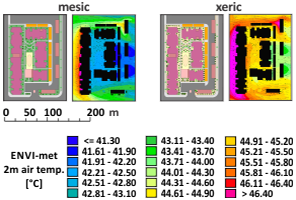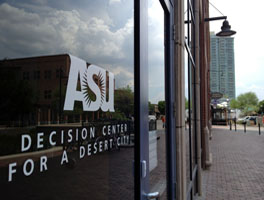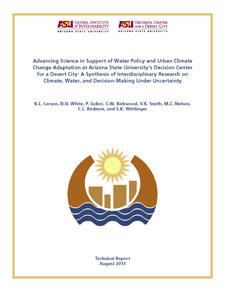 Check out these recent articles regarding the science policy interface in Nature and The Guardian.
Check out these recent articles regarding the science policy interface in Nature and The Guardian.
Policy: Twenty tips for interpreting scientific claims, by William J. Sutherland, David Spiegelhalter, and Mark Burgman. Published November 20,2013. Calls for the closer integration of science in political decision-making have been commonplace for decades. However, there are serious problems in the application of science to policy — from energy to health and environment to education.This list will help non-scientists to interrogate advisers and to grasp the limitations of evidence.
Also, in response to the above article:
- Top 20 things politicians need to know about science by Oliver Milman on November 20, 2013.
British and Australian scientists compile a list of tips to help policy makers better understand the ‘imperfect nature of science’. Politicians lack the skills to properly interpret and analyse science, according to a group of Australian and British scientists who have compiled a list of 20 tips for MPs to ponder. The tips, published in Nature, have been compiled by William Sutherland, a zoologist, and David Spiegelhalter, a mathematician – both are from the University of Cambridge – and Mark Burgman, an ecologist at the University of Melbourne. The trio argue the “immediate priority is to improve policy makers’ understanding of the imperfect nature of science” by suggesting 20 concepts that should be taught to government ministers and public servants. - Top 20 things scientists need to know about policy-making by Chris Tyler from The Guardian on December 2, 2013.
There are some common misunderstanding among scientists about how governments make their policy decisions. When scientists moan about how little politicians know about science, I usually get annoyed. Such grouching is almost always counterproductive and more often than not betrays how little scientists know about the UK’s governance structures, processes, culture and history. So when the Guardian reported on a Nature article that listed 20 things that politicians should know about science, I started reading it with apprehension, half expecting my head to explode within a few paragraphs. - 12 things policy-makers and scientists should know about the public by Roland Jackson from the blog Political Science hosted by The Guardian.
We’ve had 20 things politicians need to know about science and 20 things scientists need to know about policy. Where’s the rest of society fit into this? We have had the Top 20 things politicians need to know about science and the Top 20 things scientists need to know about policy-making. But where does the rest of society fit into this? People can easily become invisible in the discourse between policy wonks and scientists, or they are regarded as barriers to ‘acceptance’ of whatever particular policy or technology is the flavour of the moment. That is simplistic of course because there are multiple ways in which people can and do have their voice within our democracy, but in the interest of balance here is a complementary list. There are only 12 of them, because 20 are too many. The evidence for these derives from the public dialogues evaluated by Sciencewise alongside public attitude surveys and direct personal experience of public engagement over many years.


 This study investigates the impact of urban form and landscaping type on the mid-afternoon microclimate in semi-arid Phoenix, Arizona. The goal is to find effective urban form and design strategies to ameliorate temperatures during the summer months. We simulated near-ground air temperatures for typical residential neighborhoods in Phoenix using the three-dimensional microclimate model ENVI-met. The model was validated using weather observations from the North Desert Village (NDV) landscape experiment, located on the Arizona State University’s Polytechnic campus. The NDV is an ideal site to determine the model’s input parameters, since it is a controlled environment recreating three prevailing residential landscape types in the Phoenix metropolitan area (mesic, oasis, and xeric). After validation, we designed five neighborhoods with different urban forms that represent a realistic cross-section of typical residential neighborhoods in Phoenix. The scenarios follow the Local Climate Zone (LCZ) classification scheme after Stewart and Oke. We then combined the neighborhoods with three landscape designs and, using ENVI-met, simulated microclimate conditions for these neighborhoods for a typical summer day. Results were analyzed in terms of mid-afternoon air temperature distribution and variation, ventilation, surface temperatures, and shading. Findings show that advection is important for the distribution of withindesign temperatures and that spatial differences in cooling are strongly related to solar radiation and local shading patterns. In mid-afternoon, dense urban forms can create local cool islands. Our approach suggests that the LCZ concept is useful for planning and design purposes.
This study investigates the impact of urban form and landscaping type on the mid-afternoon microclimate in semi-arid Phoenix, Arizona. The goal is to find effective urban form and design strategies to ameliorate temperatures during the summer months. We simulated near-ground air temperatures for typical residential neighborhoods in Phoenix using the three-dimensional microclimate model ENVI-met. The model was validated using weather observations from the North Desert Village (NDV) landscape experiment, located on the Arizona State University’s Polytechnic campus. The NDV is an ideal site to determine the model’s input parameters, since it is a controlled environment recreating three prevailing residential landscape types in the Phoenix metropolitan area (mesic, oasis, and xeric). After validation, we designed five neighborhoods with different urban forms that represent a realistic cross-section of typical residential neighborhoods in Phoenix. The scenarios follow the Local Climate Zone (LCZ) classification scheme after Stewart and Oke. We then combined the neighborhoods with three landscape designs and, using ENVI-met, simulated microclimate conditions for these neighborhoods for a typical summer day. Results were analyzed in terms of mid-afternoon air temperature distribution and variation, ventilation, surface temperatures, and shading. Findings show that advection is important for the distribution of withindesign temperatures and that spatial differences in cooling are strongly related to solar radiation and local shading patterns. In mid-afternoon, dense urban forms can create local cool islands. Our approach suggests that the LCZ concept is useful for planning and design purposes. In anticipation of its 10-year anniversary, Arizona State University’s Decision Center for a Desert City (DCDC) has released a major new report, “Advancing Science in Support of Water Policy and Urban Climate Change Adaptation at Arizona State University’s Decision Center for a Desert City: A Synthesis of Interdisciplinary Research on Climate, Water, and Decision-Making Under Uncertainty.” The report summarizes the center’s major achievements in research, education, and community and institutional outreach since its founding in 2004.
In anticipation of its 10-year anniversary, Arizona State University’s Decision Center for a Desert City (DCDC) has released a major new report, “Advancing Science in Support of Water Policy and Urban Climate Change Adaptation at Arizona State University’s Decision Center for a Desert City: A Synthesis of Interdisciplinary Research on Climate, Water, and Decision-Making Under Uncertainty.” The report summarizes the center’s major achievements in research, education, and community and institutional outreach since its founding in 2004.